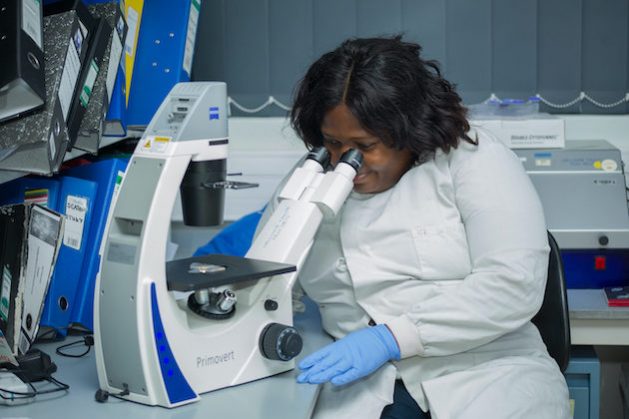ABUJA, Aug 11 (IPS) – A recent publication in the journal PLOS Medicine reviewed the relationship between COVID-19 and mental health in eight low- and middle-income countries, collectively referred to as LMICs. As important as this publication is, we are appalled by the widespread use of the term “low- and middle-income countries” utilized in this article, and indeed in the majority of the global health literature and discourse.
This term vastly oversimplifies the relationship both between individual LMICs, and between LMICs and High-income countries (HICs). It isn’t an exaggeration to say that the term is colonial and racist. It divides rather than unites. It is time to change the narrative and use an equitable term to describe countries in the Global South.
We are both from the Global South and now work in the Global North. Sowmya is from India while Ifeanyi is from Nigeria. We both live in the U.S. Indeed, Sowmya has lived there for more than 30 years. In our global health careers, we have experienced inequities meted to us and people like us simply because of where we are from.
Terms such as “low- and middle-income countries” perpetuate these inequities and use the same brush to paint 85% of the world’s population as the same. The Global South has almost six times the population of the Global North, is incredibly diverse, and has pockets of high-, middle- and low-income communities. Even within a single LMIC there is incredible diversity.
Without a doubt, categorizing countries into “low- and middle-income countries” and “high income countries” is not appropriate for studying healthcare systems and population health. It is misleading to categorize countries for convenience of data analysis and interpretation.
According to Google Scholar, so far in 2023, over 12,100 publications have used “low-and-middle income countries ” in their titles or in the text. A couple of editorials calling for a change in the classification were published in 2022 and yet, the same journal has over 15,000 publications since 2022 (more than 6000 in 2023) using these terms. Is this classification appropriate for healthcare-related research? We also do not believe that World Bank classification of countries using the gross national income (GNI) is appropriate in this scenario.
Furthermore, funding agencies and peer-reviewed journals perpetuate this problem by requiring the investigators to generalize studies conducted in one country (even one city/town/village) to not only the entire country but beyond that to other “low- and middle-income countries”.
Countries vary in their population sizes, demography, cultures, type of governments, education systems, health care policies, health care access, diseases, and socio-economic problems. Summarizing data across these countries and studying them as a unit to find a one-size-fits-all solution undermines the problems.
For instance, Nigeria has an estimated population of more than 200 million, more than 250 ethnicities that speak over 500 languages. On the other hand, India is the most populous country in the world, with a population of over 1.4 billion. It has more than 2000 ethnic groups that speak over 19,000 languages or dialects.
First, begin to rectify this issue by ensuring that studies are customized to each country so appropriate policies can be implemented to improve healthcare in the country being studied. Most problems and solutions are local and must be studied in this context.
Second, funding institutions and peer-reviewed journals should not insist on generalizability of the results beyond the targeted populations but focus on the possibility of the solutions being adaptable to different populations and situations.
Studies that can positively impact these populations even if small are worth being conducted and published. It may then be further researched and adapted as necessary in different settings but that should not be a condition for funding or publishing.
Third, knowledge transfer should be bi-directional and not unidirectional as is currently done. Therefore, countries in the Global North should be open to learning from solutions found in the Global South (what are also termed as “resource-limited or resource-poor” countries).
There are many lessons in this regard: African Union’s coordination of country COVID-19 responses through the Africa Centre for Disease Control, and diverse experiences on managing epidemics in the Global South.
Finally, researchers must tap into the power of local knowledge. This means including Ministries of Health and local investigators to identify the main problems that need studying and finding solutions to mitigate them – another step towards creating equity.
Having countries from the Global South involved with setting study priorities and also funding portions of studies will ensure that they are vested in the process and are equal partners in studies that impact their own populations. Indeed, no country has infinite resources as was seen during the recent COVID-19 pandemic and any solution that uses the available resources efficiently should be welcomed.
LMICs and HICs are vestiges of colonialism. They divide instead of unite by making the most populous parts of the global community inferior to the least populous. Most importantly, they perpetuate inequities which pose serious consequences for global solidarity.
Using ‘Global South’ versus ‘Global North’ to refer to LMICs and HICs respectively in global research vocabulary is the most equitable thing to do.
Dr. Ifeanyi M. Nsofor, MBBS, MCommH (Liverpool) is Senior New Voices Fellow at the Aspen Institute, Senior Atlantic Fellow for Health Equity at George Washington University, 2006 Ford Foundation International Fellow.
Dr. Sowmya R Rao is a Senior Research Scientist with the Department of Global Health at Boston University School of Public Health (BUSPH), a Fellow of the American Statistical Association and a biostatistician primarily interested in global health disparities.
© Inter Press Service (2023) — All Rights ReservedOriginal source: Inter Press Service
Check out our Latest News and Follow us at Facebook
Original Source

